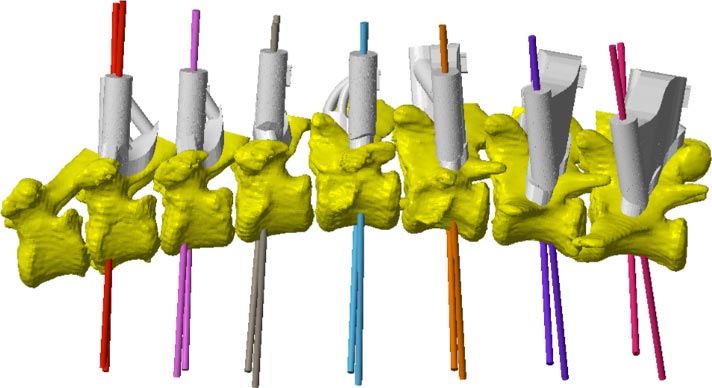27 May 2020
“Being able to treat these conditions using novel surgeries is a real differentiator for us" – Tom Cardy of Cave Veterinary Specialists.

Hector is considered neurologically normal after undergoing the spinal surgery.
Neurologists at Cave Veterinary Specialists are reporting good outcomes from a challenging surgery that uses 3D-printed models to treat spinal disease in brachycephalic dogs.
The surgery has been carried out on a series of pugs that have presented with vertebral malformations and spinal instability, which affect their continence and ability to walk.
Neurology specialists Tom Cardy and Simon Bertram have performed the surgeries, which use patient-specific 3D-printed spinal models and drill guides produced by Bill Oxley at Vet3D.
Using these guides, the team can optimally stabilise the vertebral column, resulting in excellent outcomes with many of the dogs returning to a neurologically normal status.

The drill guides sit on top of the bones of the spinal column and a series of screws, between 1.5mm and 2mm in diameter and 16mm to 24mm long, are delicately placed through tiny bony corridors in the vertebral body.
Screws are then cemented together to form a rigid construct to protect the dog’s spinal cord.
Hector, a five year-old pug, presented with marked ataxia, paraparesis and incontinence, but is now considered neurologically normal.
Mr Cardy said: “Brachycephalic dogs, such as the pug and French bulldog, often present with signs of spinal disease.
“Such conditions are often associated with vertebral malformations and instability of the vertebral column, leading to damage of the spinal cord. Diagnosis is challenging and requires multimodal 3D imaging, including MRI and CT.
“Being able to treat these conditions using novel surgeries is a real differentiator for us. We’re one of the few centres to offer this surgery in the UK and we’re proud to be leading the field in this area.”
